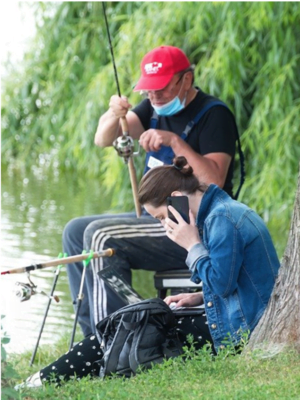 Computers have given us the freedom to work on the go and experience new things while remaining connected. It’s sometimes still hard to believe that you can be fishing from a rock while answering a client’s email. However, as convenient as being in the great outdoors with technology is, it’s also risky. One wrong move and you can end up dropping your computer in water, saying goodbye to thousands of dollars. Read on to learn what to do if that very situation happens to you.
Computers have given us the freedom to work on the go and experience new things while remaining connected. It’s sometimes still hard to believe that you can be fishing from a rock while answering a client’s email. However, as convenient as being in the great outdoors with technology is, it’s also risky. One wrong move and you can end up dropping your computer in water, saying goodbye to thousands of dollars. Read on to learn what to do if that very situation happens to you.
Arm Yourself With All the Tools
Whether you ever expect to drop your computer in water or not, it helps if you have all the right tools to assist if that should ever happen. Having the best recovery software for Mac is an excellent start, as it may help with salvaging any lost or damaged data from the incident. You may also like to make sure you’ve got plenty of towels, a microfiber cloth, and a safe place to store it while it’s drying out.
Turn Off the Power
If you’ve been powering your computer with solar power, a generator, or something else, remove your MacBook from its power source immediately. You then need to power it off, even if you have open work files that haven’t been saved. Hold down the power button until it turns off.
Move It Somewhere Dry
Even if finding somewhere dry seems like an impossible task while you’re fishing in water, it can be an essential move for your MacBook’s possible survival. Rest it on a towel somewhere out of the elements where weather or more water won’t be able to affect it.
Strip It Down
Once you have relocated your computer somewhere dry, such as your tent, remove everything that could be stopping it from drying out as quickly. This includes any external storage devices, a mouse or keyboard, a monitor, and even its battery if it can be removed.
Start the Drying Process
Start by wiping up any standing water with cotton or a paper towel. If the screen is wet, avoid damage by using a microfiber cloth. Use a cotton swab around the keyboards and ports, which will get into those-hard-to-reach places. These are not items that most people have in their fishing kit, but your first aid kit might have vital supplies if you’re in a pinch.
Let the Waiting Game Begin
While still turned off, leave it to dry for a minimum of 48 hours. Some people leave their computers upside down on a table to allow water to drip out but only do so if you can keep it stable. Refrain from using rice to speed up the drying process, but silica gel packets may help if you have them. While you play the waiting game, you can go fishing!
Once you’re confident it’s dry, turn the computer back on and see whether its experience swimming with the fishes proved fatal or not. It’s at this stage where your recovery software may be helpful for trying to access any damaged files.
Not every submerged computer can be saved, but there’s no harm in trying your luck. With a combination of quick actions and superior software, you may at least be able to access important documents you thought were lost forever.

